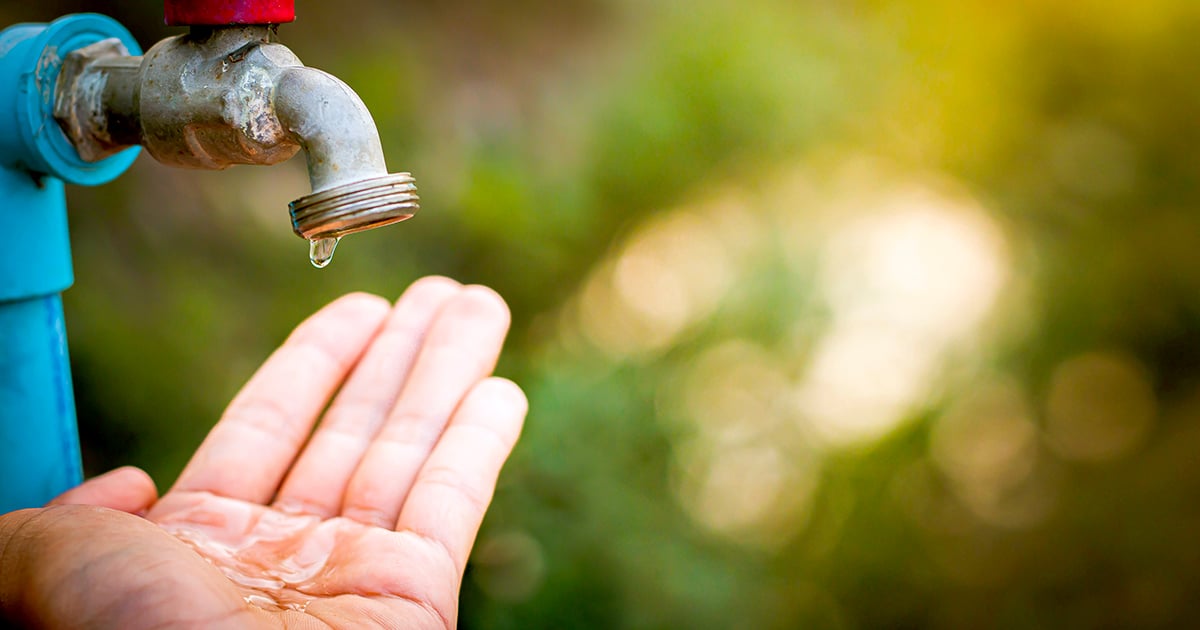
The Western U.S. is in the midst of a severe drought, and there’s a lot homeowners can do to conserve water without disrupting their quality of life.
From outdoor watering to smart use of faucets, learn what you can do to be a better steward of this essential natural resource.
Saving water on the lawn
1. Run your sprinklers just twice a week
For a quarter-acre yard, each watering session can use a whopping 3,000 gallons of water. If you live in a high desert climate like northern Utah, Los Angeles, or San Bernadino, you only need to water the lawn twice a week, experts say.
In low desert areas of Nevada and Arizona, you may be better off with native plants and water wise xeriscaping.
2. Don’t run sprinklers during the day
You can also make your secondary water go further by watering between the hours of 8 p.m. and 10 a.m. and avoiding watering during windy conditions. That way, you won’t lose nearly as much water to evaporation.
3. Raise your mower blade
In drought years, you can save water by raising your lawn mower blade to three or four inches. This will lead to deeper roots that can better access water stored deep underground. Long blades of grass will also provide shade to the roots and soil, leading to less evaporation.
4. Check your system for leaks
It’s sad but true that sprinkler systems break down pretty often. Check your system for leaks or blockages at least once a year, and make repairs right away.
Conserving water inside the house
1. Turn off faucets when not in use
Many of us are accustomed to leaving the water running while we’re shaving or brushing our teeth, but you can save a lot of water by simply turning off those faucets. If you still need access to rinse water while shaving, try plugging the drain and filling the basin halfway.
2. Install low flow faucets and showerheads
To see even greater savings, consider installing low flow faucets and showerheads throughout the house. If you don’t want to replace faucets entirely, you could try attaching water aerators or water flow-reducer attachments.
When you're making upgrades, don't forget to check with your local utility company. You may be eligible for rebates or even no-cost water-wise fixtures.
3. Check for leaks
Leaky pipes aren’t just bad for water conservation, they can cause big problems around the home! According to experts from Colorado State University, checking for (and repairing) leaks can save up to 140 gallons per week.
In addition to checking for leaks, keep an eye out for toilets that run and faucets that drip. Small repairs can make a big difference!
4. Run appliances with full loads
Whether it’s running the dishwasher or washing clothes, you can save water by running the shortest possible cycles and only running machines with full loads.
It's also best to avoid pre-rinsing dishes or washing them by hand. Most modern dishwashers can handle small bits of leftover food, and hand washing wastes a lot more water and energy than using the machine.
Talk with a loan officer today
If you’re on the hunt for your next home (or your first home), your friendly loan officer can help you determine what you can afford by getting you prequalified for a home loan.
If you're ready to refinance, your loan officer can answer all your questions about tapping your equity so you can:
- Reinvest in your home
- Accomplish your personal or business goals
- Adjust your rate and term
- Save on monthly payments
Contact your loan officer when you're ready to discuss options!


